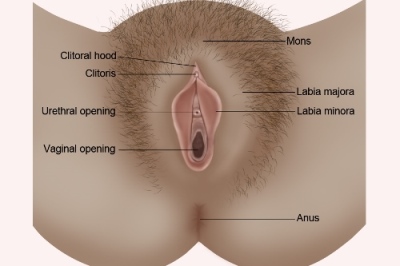Labiaplasty in Memphis
The term labiaplasty refers to a procedure that reduces the length of the labia minora. It is the most commonly performed aesthetic genital plastic surgery and it can relieve symptoms women experience from twisting and tugging of the labia.
Reasons patients want a labiaplasty
Women opt for surgery for a variety of reasons, including pain from twisting and tugging of the labia when riding a bike or during intercourse, itching, irritation and self-consciousness.

What does a labiaplasty do?
Anesthesia for a labiapasty
The Procedure

Risks and Safety
The risks associated with labiaplasty include those of most surgical procedures, including bleeding, hematoma and infection. The most common complication is over-resection. While some women desire an aggressive reduction, this can result in chronic dryness, scarring at or near the vaginal opening and pain with intercourse. Healing problems are more likely to occur with a wedge procedure, particularly if the patient is exposed to substances that cause blood vessels to shrink.
Recovery After Surgery
Most patients take a week off from work, during which they can reduce swelling and pain by icing with a cold pack sandwiched between the patient’s underpants and an elastic garment, like Spanx. This can be done “twenty minutes on, twenty minutes off.” The patient can also lie with her bottom elevated to reduce swelling.
Patients can resume wearing tampons or having intercourse after four to six weeks. Trim labiaplasty generally allows for a quicker recovery.
While the most distorting swelling is gone by 6 weeks, residual swelling may take six months to disappear.
Results
Labiaplasty typically results in shorter labia that no longer hang down below the level of the hair-bearing labia majora. Most patients who experienced symptoms from twisting and tugging of their labia generally find relief after surgery. According to multiple studies, labiaplasty surgery is associated with a high satisfaction rate of over 90 percent.
Robert Wallace MD
“Dr. Robert D. Wallace has been recognized for many years as one of the best plastic surgeons in the United States and has an international reputation for his work in craniofacial, cleft, and cosmetic surgery. He has been on Castle Connelly’s Top Doc list and Best Doctors award for many consecutive years. In addition, he was selected by Newsweek magazine in 2021 and 2022 as one of the top 100 plastic surgeons in the USA on their list for facelift and rhinoplasty surgery. In 2022 he was honored by Memphis Business Journal with the Healthcare Hero award in the physician category for his work in pediatric and craniofacial surgery. He has published multiple medical articles and book chapters in plastic surgery literature.”

Get In Touch
If you have any questions or want to schedule an appointment, contact us and our team will be glad to support you